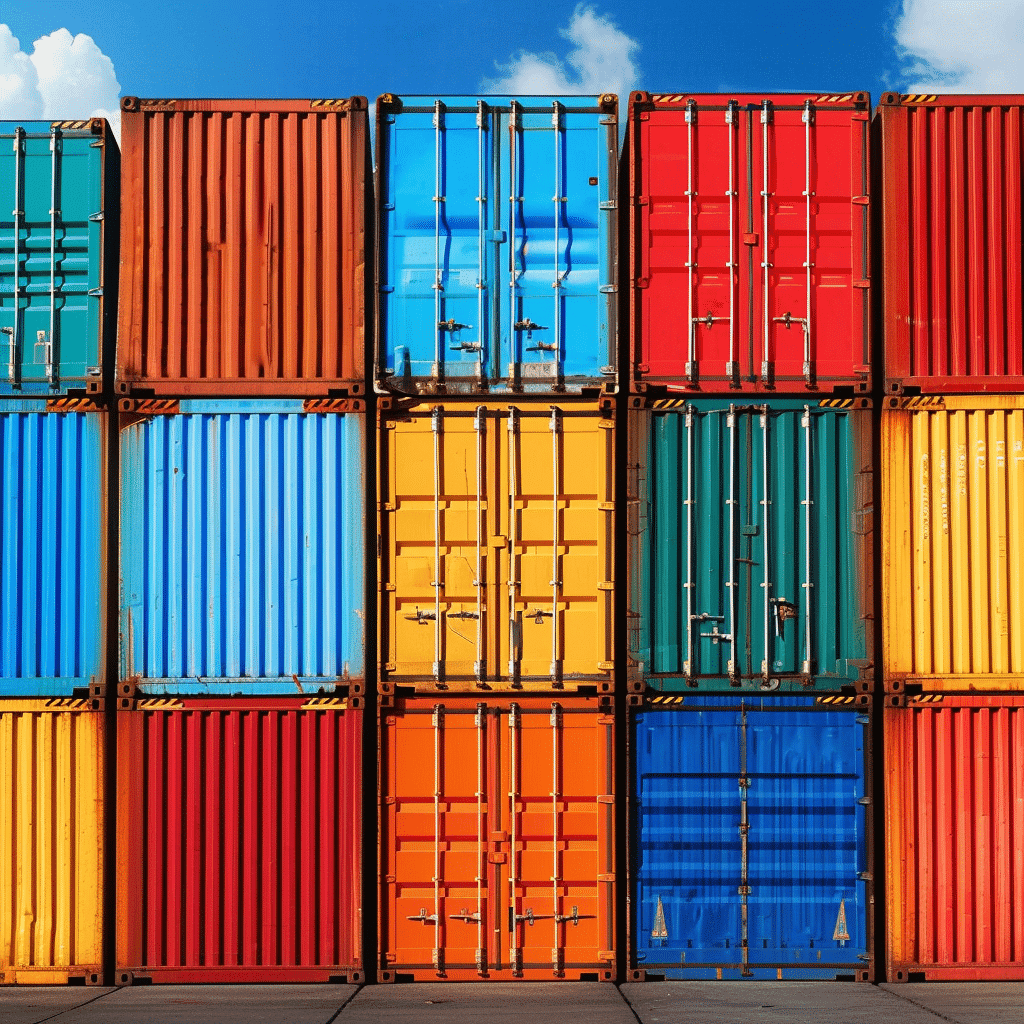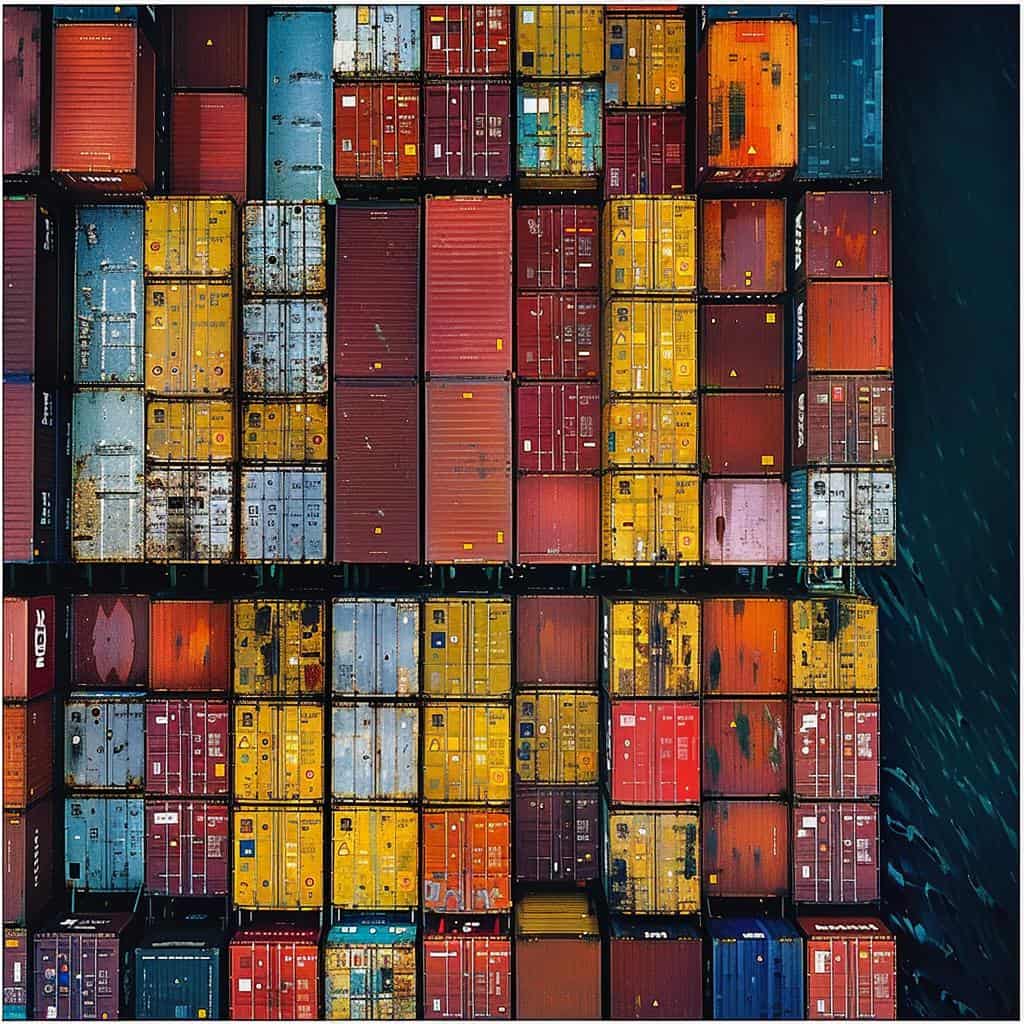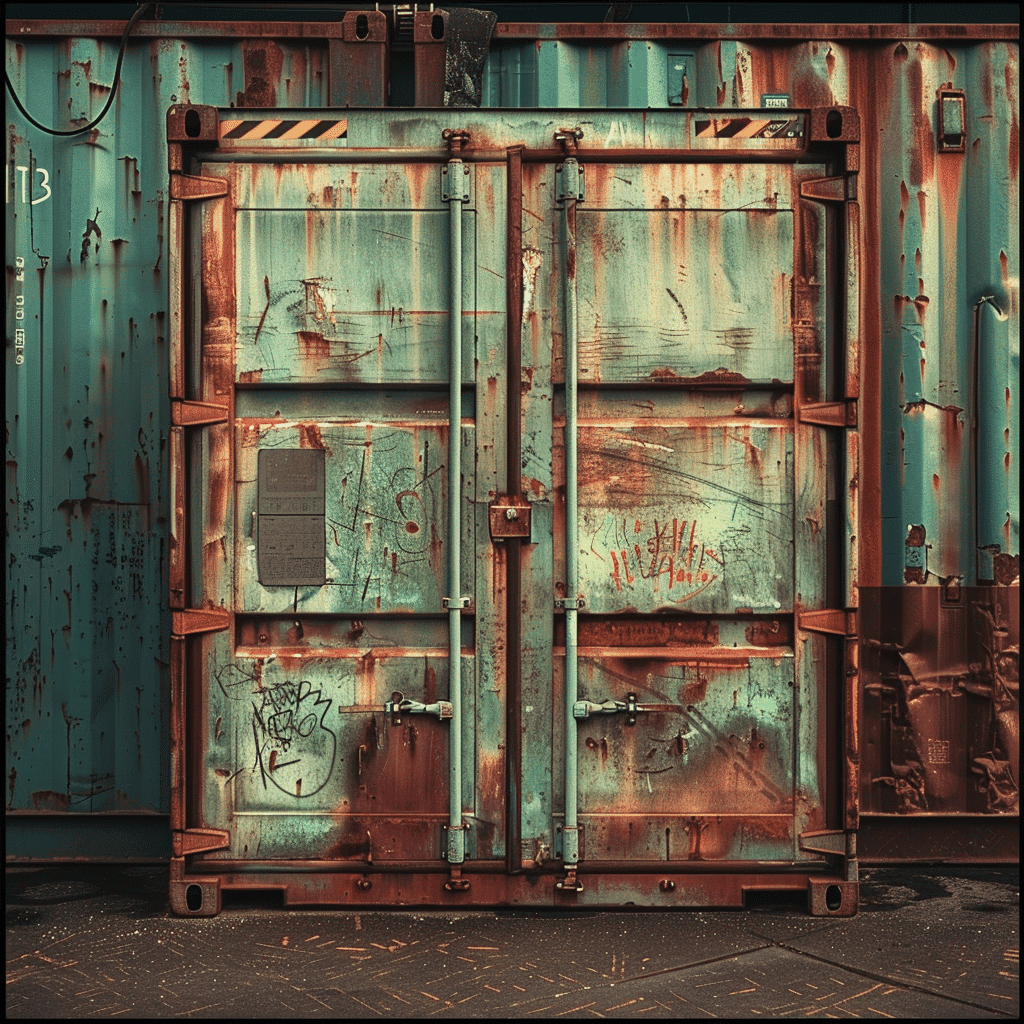How to Buy Shipping Containers
Are you in the market for a shipping container? Look no further! This article will guide you through the process of how to buy shipping containers. Discover the various types available, learn about the legal and regulatory aspects, and explore the possibilities for customization and modifications.
With this comprehensive guide, you’ll be well-equipped to make an informed decision when it comes to buying a shipping container.
Getting Started
To get started, you’ll want first to understand the basics of purchasing shipping containers. Buying shipping containers can be a complex process, but with the right knowledge, you can make an informed decision.
The container industry is vast, with numerous container suppliers and shipping container dealers vying for your business. When buying a shipping container, it is important to find a reputable container dealer who can provide you with quality containers at a fair price. Researching different container suppliers and comparing their prices and services is crucial to finding the best deal.
Additionally, understanding the different types and sizes of shipping containers available will help you determine which container is best suited for your needs. By familiarizing yourself with the basics of buying shipping containers, you can confidently enter the market and make a well-informed purchase.
What is a Shipping Container?
A shipping container is a large metal box that is used for transporting goods across long distances. Shipping containers are designed to be sturdy and secure, ensuring that ship cargo and the items being transported remain safe during the journey. These containers come in different sizes and shapes, making them suitable for various types of cargo.
When looking to buy a shipping container, it is essential to consider the specific requirements of your shipment and choose the appropriate container type accordingly.
There are different options available, such as standard containers, high cube containers, and refrigerated containers, among others. Depending on the nature of your cargo, you can purchase new or used shipping containers. It is important to research and compare prices from different suppliers to find the best deal for your needs.
Why Buy a Shipping Container
When considering purchasing a container, you’ll find that there are several reasons why it can be a beneficial investment for your business or personal use.
One of the main advantages is the availability of brand-new containers that are specifically designed for cargo transportation. These containers offer the highest level of quality and durability, ensuring that your goods are well-protected during transit.
Additionally, many suppliers offer competitive pricing for these brand-new containers, making it a cost-effective choice. However, if you’re on a tighter budget, you can also opt for used shipping containers. While the used shipping container’s condition may vary, reputable suppliers ensure that they are in good working order.
Another consideration is delivery costs, which can be minimized by choosing a supplier with a wide network and efficient logistics.
Overall, investing in a quality shipping container can save you time, and money, and provide peace of mind for your cargo transportation needs.

Types of Shipping Containers
There are various types of containers available for different cargo transportation needs. The shipping container industry provides a wide range of options to choose from, including cargo containers, cargo-worthy containers, and used containers. These container types come in different sizes, such as 20-foot, 40-foot, and high cube containers, to accommodate varying cargo volumes.
Shipping container prices can vary depending on factors such as size, condition, and location. Cargo containers are designed to transport goods safely and securely, while cargo-worthy containers are certified to meet international shipping standards. Used containers, on the other hand, offer a more affordable option for those on a budget.
With the variety of types of shipping containers available, individuals and businesses can find the right container to suit their cargo transportation needs.
New vs. Used Containers
Moving on to the next subtopic, let’s discuss the difference between new and used shipping containers.
When searching for shipping containers for sale, one of the first decisions to make is whether to purchase a new container or used container. Both options have their advantages and drawbacks.
New containers are a popular choice for those who want a pristine, untouched container. They come in various sizes and are typically more expensive than used containers. However, the higher shipping container cost is justified by their excellent condition and durability.
On the other hand, used containers offer a more cost-effective solution. They have been previously used for shipping but are still in good condition. Many container home builders prefer used containers as they provide a more rustic and authentic look. By purchasing from reputable sellers, you can find high-quality containers at competitive prices.
Ultimately, the choice between a brand new container or used container depends on your specific needs and budget.
Container Sizes and Dimensions
If you’re looking for container sizes and dimensions, it’s important to consider the specific requirements of your project.
The size of a shipping container depends on various factors, such as the type of cargo you plan to transport or the purpose of the container. The most common container sizes are the standard container and the high cube container. The standard container is 8 feet wide, 8 feet 6 inches tall, and comes in lengths of 20 or 40 feet.
On the other hand, the high cube container is also 8 feet wide and 8 feet 6 inches tall, but it offers an additional foot of height, making it perfect for taller cargo.
Depending on your needs, you can choose between new and used containers, or even consider one trip containers for a more cost-effective option.
Whether you need a container for shipping or storage purposes, understanding the various container sizes and dimensions is crucial in finding the right fit for your project.
Specialized Containers (Refrigerated, Open Top, Flat Rack, etc
When considering container sizes and dimensions, it’s important to also explore specialized options such as refrigerated, open top, and flat rack containers. These specialized containers offer unique features and benefits for specific shipping needs.
Refrigerated containers, also known as ‘reefers,’ are equipped with temperature control systems, making them ideal for transporting perishable goods that require a controlled environment.
Open top containers have a removable top, allowing for easy loading and unloading of oversized or heavy cargo. Flat rack containers have collapsible sides, making them perfect for shipping bulky or irregularly shaped items.
Understanding the different types of specialized containers is crucial when looking to buy shipping containers. By considering the specific requirements of your cargo, you can select the most suitable container option and ensure a smooth and efficient shipping process.
Factors to Consider When Buying
Before making a purchase, take into account factors such as cost, size requirements, and transportation logistics.
When buying shipping containers, it is important to consider the average price and look for the best price available in the market. Additionally, you should assess your cargo transportation needs and determine the appropriate container size.
The condition of the containers is another crucial factor to consider, especially when buying used shipping containers. Ensure that the containers are in good condition and can withstand the rigors of transportation. Lastly, don’t forget to factor in the shipping costs associated with acquiring the containers.
Purpose (Storage, Shipping, Conversion Projects)
The purpose of using shipping containers can vary depending on whether they are used for storage, shipping, or conversion projects.
When it comes to storage, individuals and businesses alike can benefit from the use of storage containers. These containers provide a secure and weatherproof solution for long-term storage needs.
For shipping purposes, cargo-worthy containers are essential. These containers meet the necessary standards to ensure the safe transportation of goods across long distances.
Additionally, shipping containers can be converted into container homes or shipping container houses. These conversions require containers with structural integrity and the option to choose high cube containers for added height.
Whether it’s for storage, shipping, or conversion projects, the versatility of shipping containers makes them a popular choice in various industries.
Container Condition (A-Grade, B-Grade, C-Grade)
Container condition can vary, with A-Grade containers being in the best condition, followed by B-Grade and C-Grade containers.
When purchasing a shipping container, it is important to consider the container’s condition to ensure it meets your needs. A-Grade containers are considered high quality and are often cargo-worthy, meaning they can be used for international shipping without any issues.
B-Grade containers may have some minor cosmetic damage but are still structurally sound and suitable for various purposes, such as storage or conversion projects.
On the other hand, C-Grade containers may have significant damage, such as dents, rust, or leaks, making them less desirable.
It is recommended to conduct a pre-purchase inspection when buying a container to assess its condition accurately. Reputable shipping container sellers often provide detailed information about container condition to help buyers make informed decisions.
Location and Delivery
When purchasing a container, it’s important to consider the location and delivery options available. Buyers should start by researching local dealers who offer shipping containers for sale. This allows them to visit the dealer in person and inspect the containers firsthand.
One of the key factors to consider is the delivery fees. Buyers should inquire about the cost of having the container shipped to their desired location. Some local dealers may offer their own delivery services, while others may rely on shipping companies.
Buyers should also consider whether they want the container delivered ‘as is’ or if they require any modifications. Choosing a local dealer and arranging delivery through their own delivery truck can often result in a lower price compared to using shipping companies.
Climate and Weather Considerations
Considering climate and weather is crucial when selecting a location for delivery. It is important to take into account the container’s ability to withstand different weather conditions. When buying shipping containers, it is recommended to opt for containers made of corten steel, as they are known for their durability and resistance to corrosion.
Additionally, choosing a high cube container allows for more interior space while still maintaining wind and water tightness. Furthermore, it is advisable to inspect the exterior container’s appearance to ensure that there are no significant damages that could compromise its functionality.
Taking these climate and weather considerations into account will not only ensure the safety of the goods being transported but also contribute to a cost-effective and efficient delivery process.
Cost and Budgeting
Opting for cost-effective solutions is crucial when budgeting for delivery expenses. When it comes to buying shipping containers, there are several options to consider.
First, it’s important to determine the specific needs of the shipment. For industries that require food grade containers, it is essential to invest in containers that meet the necessary standards.
Additionally, purchasing containers in good shape is vital to ensure the safe and secure transportation of goods. While new containers may seem like the obvious choice, it is worth exploring lease containers as well. These can provide a more affordable option without compromising on quality.
Moreover, volume discounts are often available for those looking to buy multiple containers. Lastly, considering WWT containers (wind and water tight) can be a cost-effective solution for those who don’t require brand new containers.
Price Factors
Purchasing used containers can be a cost-effective option for those on a budget. When considering price factors, buyers should take into account the condition of the container, the age, and the size.
Containers that are in good condition and have undergone maintenance will generally cost more than those in poor condition. Age is also a determining factor, as older containers may have more wear and tear. Size is another important consideration, as larger containers tend to be more expensive.
Buyers also need to factor in the cost of delivery, as this can vary depending on the distance and location. It is advisable to compare prices from different sources, such as local dealers and leasing companies, to ensure a good deal.
Overall, by carefully considering these price factors, buyers can find a suitable container within their budget.
Hidden Costs
Be aware of potential hidden costs when looking for a container within your budget. When it comes to moving cargo or shipping goods overseas, finding a suitable container is crucial. However, it is important to consider the necessary equipment and other hidden costs that may arise during the process.
One key factor to keep in mind is the size of the container. While a larger container may seem like a better option for storage space, it can also lead to higher transportation costs. Additionally, it is essential to ensure that the container is watertight to protect your goods from any damage during shipping.
These hidden costs can add up quickly, so it is important to carefully evaluate all aspects before making a decision.
Financing Options
When it comes to financing options for container transportation, it’s important to consider the interest rates and repayment terms.
Many individuals and businesses who want to buy shipping containers may not have the cash upfront to make the purchase. In such cases, exploring financing options is crucial.
There are several ways to finance the purchase of shipping containers. One option is to approach banks or financial institutions that offer loans specifically for container purchases. Another option is to sell directly to container sellers who provide financing options. These sellers often have online platforms where potential buyers can search for containers and explore financing options.
It’s essential to compare interest rates and repayment terms from different lenders or sellers before making a decision. By doing so, buyers can find the best financing option that suits their needs.
Inspection and Quality Check

After considering financing options for purchasing a shipping container, the next step is to conduct an inspection and quality check.
When buying standard shipping containers, it is crucial to assess their condition to ensure they meet your requirements. Start by examining the exterior for any signs of structural damage, such as dents or rust. Check if the container is water-tight by inspecting the seals and ensuring there are no leaks. Look for any welded patches, as they may indicate previous repairs.
Inside, assess the cleanliness and overall condition of the container. This inspection will help you determine if the container is suitable for your intended use, whether it’s for storage or a specific purpose.
Taking the time to thoroughly inspect a potential container will ensure you make a sound investment.
Checking for Damages
Take a close look at the exterior of the container to check for any signs of structural damage, such as dents or rust.
When checking for damages, it is important to assess the overall condition of the container. Look for any dents, scratches, or holes that may compromise the integrity of the structure. Rust can weaken the metal and lead to further deterioration over time.
It is essential to inspect the doors and hinges for smooth operation and any signs of damage. Additionally, examine the flooring for any cracks or signs of wear and tear.
Ensuring Wind and Watertightness
To ensure the container is wind and watertight, you should closely inspect the seals and gaskets for any signs of damage or deterioration. This is crucial when learning how to buy shipping containers.
It is important to check the condition of the seals and gaskets as they play a vital role in keeping the contents of the container safe and protected from external elements.
Additionally, if you are planning to purchase multiple containers, it is advisable to opt for smaller containers that can be easily managed and maintained. These containers usually have a steel frame and roll-up doors, which further enhance their wind and watertightness.
To find suitable containers, one can search online for reputable sellers or consult with shipping container experts who can guide you in making the right choice.
Inspect for Rust and Corrosion
Inspect the exterior of the container closely for any signs of rust or corrosion. Rust and corrosion occur when metal is exposed to moisture and oxygen over an extended period of time. When buying a shipping container, it’s crucial to ensure that there are no visible signs of rust or corrosion on the surface.
This includes inspecting the walls, roof, and doors of the container. Even small patches of rust or corrosion can weaken the container’s structure and potentially lead to leaks or other damage. It is recommended to thoroughly examine the container and consult with a professional if any signs of rust or corrosion are found.
A professional can provide guidance on the extent of the damage and potential repairs needed.
Legal and Regulatory Aspects
After considering the issue of rust and corrosion, it is important to understand the legal and regulatory aspects when purchasing shipping containers.
When buying a container, it is crucial to ensure that it complies with all relevant laws and regulations. This includes checking that the container has been properly inspected and certified and deemed suitable for use.
Additionally, certain containers may be prohibited from transport due to the presence of toxic chemicals or other hazardous materials. It is essential to select the right container for the intended purpose, such as choosing a refrigerated container for transporting fruits.
It is advisable to consult with experts or legal professionals to ensure compliance with all legal and regulatory requirements when buying shipping containers.
Permits and Zoning Laws
When purchasing a shipping container, it’s important to be aware of the permits and zoning laws that may apply. These regulations ensure that the containers are used in a safe and appropriate manner. Depending on the intended use, there are different permits that may be required.
The following categories are commonly associated with shipping container permits: residential, commercial, and industrial. It is crucial to check with local authorities to determine which permits are necessary for your specific situation.
In addition to permits, zoning laws also play a role in the use of shipping containers. Zoning regulations dictate where containers can be placed and how many containers are allowed on a property. Most shipping containers are designed to be stackable and can be secured using railroad ties. However, it’s important to comply with local zoning laws to avoid any potential violations.
Overall, understanding the permits and zoning laws related to shipping containers is essential to ensure compliance with local regulations and to avoid any legal issues in the future.
Import and Export Regulations
After understanding the permits and zoning laws associated with buying shipping containers, it is crucial to consider import and export regulations.
These regulations govern the transportation of goods across international borders and can significantly impact the process of purchasing shipping containers.
Import regulations determine the requirements and restrictions for bringing containers into a country, such as customs duties and inspections.
Export regulations, on the other hand, control the shipment of containers to other countries and may involve restrictions on certain goods or destinations.
To navigate these regulations successfully, buyers should research the specific import and export regulations of their country and any countries they plan to ship containers to.
Compliance with these regulations is essential to ensure a smooth and legal transaction when purchasing shipping containers.
Frequently Asked Questions (FAQ)
How Much Does Shipping a Container Cost?
On average, the cost can range from $1,000 to $5,000.
Can You Buy Your Own Shipping Container?
Yes, individuals and businesses can both buy their own shipping containers. Valtran is a great provider of both new, used and refurbished shipping containers for sale.
How Do I Get the Best Price on a Shipping Container?
To secure the best price on a shipping container, it’s advisable to obtain quotes from multiple sellers, consider purchasing used containers, and negotiate the price when possible
Are Containers a Good Investment?
Shipping containers can offer a stable source of passive income, but like any investment, it’s essential to research and work with reputable companies to understand potential returns and risks.
Conclusion
In conclusion, buying a shipping container can be a practical solution for various purposes. Whether you need it for storage, transportation, or even as a customized living space, understanding the legal and regulatory aspects is crucial.
By familiarizing yourself with permits, zoning laws, and import/export regulations, you can ensure a smooth purchasing process. Additionally, knowing the different types of shipping containers available allows you to choose the one that best fits your needs. So, don’t hesitate to explore the options and make an informed decision when buying a shipping container.


